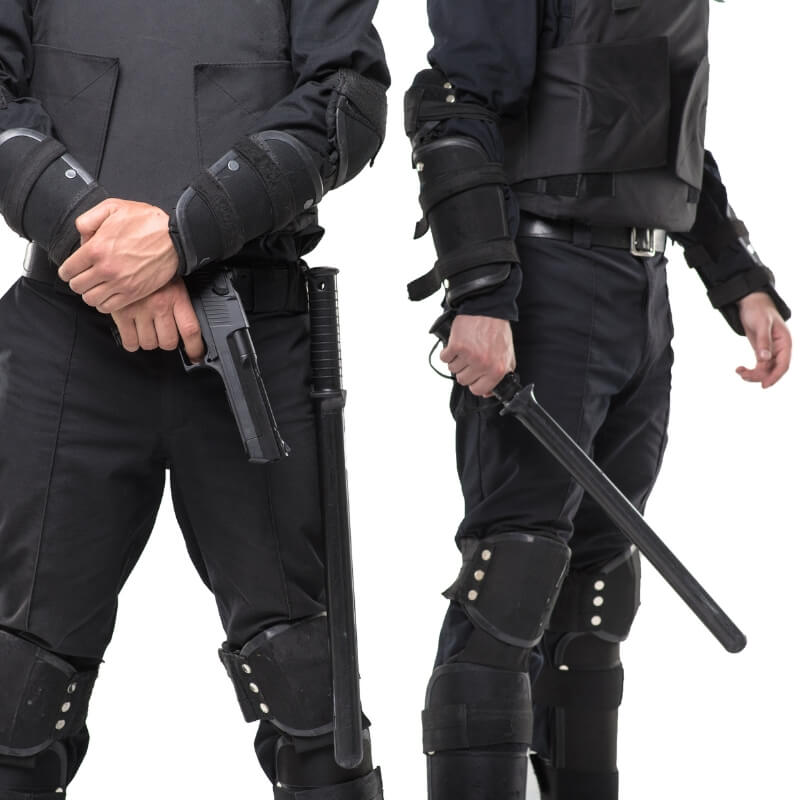When sourcing ballistic protection, understanding the direct relationship between NIJ level body armor plate thickness and its corresponding protection level is critical.
For procurement teams in law enforcement, military supply chains, and private security, this knowledge ensures operational safety, maintains regulatory compliance, and supports strategic purchasing decisions.
This guide provides a clear breakdown of NIJ protection levels, compares soft and hard armor plates, and analyzes how plate thickness, dimensions, and weight impact field use—all to help make well-informed purchasing choices.

What Are NIJ Protection Levels?
NIJ Body Armor Plate Ratings Explained
The NIJ standard 0101.06 is the most referenced standard as of now, though 0101.07 is being phased in. Below is a full guide to the different levels:
Level IIA (Deprecated – Very Rare Now)
- Protection Against: It stops 9mm FMJ at ~1,225 fps and .40 S&W at ~1,155 fps, offering basic protection against standard handgun rounds.
- Type: Soft armor
- Use Case: Low-threat environments, minimal concealment.
- Status: Obsolete — not recommended due to limited stopping power.
Level II
- Protection Against: It stops 9mm FMJ at ~1,305 fps and .357 Magnum JSP at ~1,430 fps, providing solid protection against common handgun threats.
- Type: Soft armor
- Weight & Flexibility: Lightweight and more flexible than higher levels.
- Use Case: Law enforcement patrol officers; protection against common handgun threats.
Level IIIA
- Protection Against: It stops .357 SIG FMJ at ~1,470 fps and .44 Magnum SJHP at ~1,430 fps, covering powerful handgun threats.
- Type: Soft armor (sometimes reinforced)
- Use Case: Highest protection available in soft armor, used by law enforcement and private security.
- Optional: Can also stop most lower-caliber rounds (.45 ACP, 9mm, etc.).
Level IV (Highest Standard Level)
- Protection Against: It stops .30-06 M2 AP at ~2,880 fps, providing protection against armor-piercing rifle threats.
- Type: Hard armor plate (ceramic or composite with a strike face)
- Use Case: Military combat scenarios and high-risk tactical operations.
- Performance: Stops at least one AP rifle round — this is the maximum level under NIJ 0101.06.
- Note: Usually heavier and bulkier; often used in conjunction with soft armor underneath.
Soft vs. Hard Body Armor Plate Thickness: Key Differences

Soft Armor Plates: Flexible and Lightweight
Soft armor consists of multiple layers of high-performance fibers, such as aramids (like Kevlar) or UHMWPE (Ultra-High-Molecular-Weight Polyethylene).
These materials work by dispersing the bullet’s energy to reduce penetration and trauma.
- Typical Thickness: 4mm – 10mm
- Key Traits: Soft armor is thin, flexible, and lightweight, conforming to the body for comfortable, extended wear—ideal for discreet protection against handguns and fragmentation.
- Best For: Patrol officers, VIP protection, low- to moderate-threat environments
Because of their flexibility and low-profile design, soft armor plates are commonly used by patrol officers, executive protection, and undercover personnel who need all-day wearability.
Hard Armor Plates: Rigid and High-Impact Resistant
Hard armor is built to stop rifle-caliber threats and armor-piercing projectiles.
These plates are constructed from rigid materials like ceramics (alumina, silicon carbide), hardened steel, or multi-layered composites often backed with a foam or polyethylene layer to reduce trauma.
- Typical Thickness: 10mm to 25mm, depending on material and threat rating
- Key Traits: Hard armor has a rigid, impact-fracturing surface, often curved for fit but less flexible, and can be used alone or layered over soft armor for added protection.
- Ideal For: Military, tactical units, or active shooter response, where protection against high-velocity rifle rounds is critical.
While hard plates provide greater ballistic protection, they add bulk and weight, which can affect agility, endurance, and heat retention—factors critical in extended field operations
Understanding Ballistic Plate Dimensions and Sizing
Standard ballistic plate dimensions, such as 10×12 inches (SAPI Medium) and 11×14 inches (SAPI Large,) are the industry norm.
However, procurement managers must also consider the plate cut (e.g., SAPI, Shooters Cut, Swimmers Cut) as it impacts coverage versus mobility.
For example, a Shooters Cut provides less coverage at the shoulders to allow for better weapon shouldering.
For B2B orders, offering sizing and cut variations is vital to accommodate diverse personnel and roles. Larger plates provide broader vital organ protection but can impede movement, a critical trade-off in tactical situations.
Custom sizing solutions are often available and highly recommended for bulk orders to ensure proper fit, protection, and function across an entire organization.
Tactical Body Armor Guide for Procurement
This concise tactical body armor guide helps B2B buyers ask the right questions during the procurement process:
- Threat Assessment: Does the operational environment require handgun or rifle protection? Be specific about the most likely ammunition types your team will face.
- Material and Weight: What is the trade-off between the weight of the plates, the mobility required for the mission, and the overall budget? Lighter plates reduce fatigue but increase costs.
- Supplier Verification: Can the vendor provide current NIJ compliance documentation and third-party lab results? Are they listed on the NIJ CPL?
- Customization & Scalability: Does the supplier offer the necessary range of sizes and cuts? Do they have the production capacity to fulfill large-volume orders on schedule?
